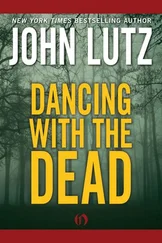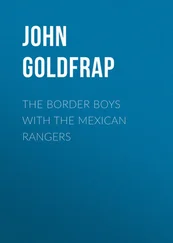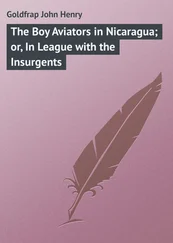John Wohlstetter - Sleepwalking with the Bomb
Здесь есть возможность читать онлайн «John Wohlstetter - Sleepwalking with the Bomb» весь текст электронной книги совершенно бесплатно (целиком полную версию без сокращений). В некоторых случаях можно слушать аудио, скачать через торрент в формате fb2 и присутствует краткое содержание. Город: Seattle, Год выпуска: 2012, ISBN: 2012, Издательство: Discovery Institute Press, Жанр: История, military, Политика, Публицистика, на английском языке. Описание произведения, (предисловие) а так же отзывы посетителей доступны на портале библиотеки ЛибКат.
- Название:Sleepwalking with the Bomb
- Автор:
- Издательство:Discovery Institute Press
- Жанр:
- Год:2012
- Город:Seattle
- ISBN:978-1-93659-906-6
- Рейтинг книги:3 / 5. Голосов: 1
-
Избранное:Добавить в избранное
- Отзывы:
-
Ваша оценка:
- 60
- 1
- 2
- 3
- 4
- 5
Sleepwalking with the Bomb: краткое содержание, описание и аннотация
Предлагаем к чтению аннотацию, описание, краткое содержание или предисловие (зависит от того, что написал сам автор книги «Sleepwalking with the Bomb»). Если вы не нашли необходимую информацию о книге — напишите в комментариях, мы постараемся отыскать её.
RICHARD PERLE, Resident Fellow, American Enterprise Institute and Assistant Secretary of Defense, 1981–1987 Sleepwalking with the Bomb
Sleepwalking with the Bomb — читать онлайн бесплатно полную книгу (весь текст) целиком
Ниже представлен текст книги, разбитый по страницам. Система сохранения места последней прочитанной страницы, позволяет с удобством читать онлайн бесплатно книгу «Sleepwalking with the Bomb», без необходимости каждый раз заново искать на чём Вы остановились. Поставьте закладку, и сможете в любой момент перейти на страницу, на которой закончили чтение.
Интервал:
Закладка:
South Africa’s decision had two real-world impacts: it reduced weapons-grade nuclear material suitable for theft, and it was a political symbol of voluntary nuclear disarmament as the Cold War ended. But several thousand South African nuclear scientists were now seeking new employment, joining thousands of jobless Russian scientists. They were ripe for picking by nuclear aspirants.
Former Russian Republics: Ukraine, Belarus, Kazakhstan
THE MOST significant voluntary disarmament moves were made in three republics formerly part of the Soviet Union: Ukraine, Belarus, and Muslim-majority Kazakhstan. The prime incentive these nascent countries had for surrendering their arsenals was that it would facilitate separation from post-Soviet Russia. They had no great incentive to keep them—using them against the West or against Russia would surely have resulted in their own destruction.
Securing their nuclear material against diversion by hostile states or sophisticated terrorist groups proved a grand challenge. Once again, The Nuclear Express provides unmatched narrative detail, in this case, on the technology and logistics of securing nuclear material in the former Soviet Union. The scale of the problem was breathtaking.
Between entering the atomic age in 1949 and its year-end breakup in 1991, the USSR produced 1,200 metric tons of highly enriched uranium and 140 to 162 metric tons of plutonium reprocessed from nuclear reactor waste. If a tenth of a percent of the material went missing, there would be 1.3 tons of weapons-grade uranium and 310–360 pounds of weapons-grade plutonium loose in the world, enough for dozens of nuclear bombs.
Further, as the Soviet Union dissolved there were still some 27,000 Soviet nuclear weapons—including 11,000 thermonuclear ones—to be dismantled, much of this arsenal located in the three former Soviet republics. Having been part of the former Soviet Union, and thus parties to the 1991 START I Treaty, they agreed to transfer their entire arsenals to Russia. Of the three, Belarus had the fewest weapons—81 warheads on mobile ICBMs (an arsenal nearly as large as that of India or Pakistan). Ukraine’s immense arsenal of 5,000 nuclear warheads—several times larger than the arsenals of Great Britain and France combined —made it the world’s third-largest nuclear power. And Kazakhstan had nearly 2,000 warheads—including an estimated 1,000 multi-megaton warheads sitting on the monster SS-18, the largest ICBM ever built.
Kazakhstan faced even thornier problems than disposing of weapons. Its nuclear test area underwent 456 tests in 41 years, the highest number of tests for one test site, massively contaminating the test site soil. Worse, Kazakhstan had to find a way to rid itself of its weapons-grade uranium used in Russian nuclear submarines. In late 1994 the U.S. sent massive military cargo planes on a secret airlift mission to Kazakhstan to pack up and remove the fuel. In an operation that equaled anything Hollywood could serve up, they succeeded in getting their cargo out just before Iranian buyers could get their hands on the stuff for use in crude uranium “gun-trigger” devices.
Amazingly, by 1996 all three former Soviet republics were nuclear weapon free. In 2012 Ukraine’s final shipment of weapon-grade uranium was sent to Russia.
Pseudo-Disarmers: North Korea and Iran
HOSTILE STATES manipulate the international community to frustrate nonproliferation enforcement. North Korea and Iran have been following the same playbook, with North Korea having already crossed the finish line and Iran rapidly approaching it. They use dummy firms to purchase prohibited items; they launder money to fund their program; they make serial offers of pseudo-concessions to curry goodwill; and they use negotiations to stall.
When nice does not work they use not-nice: threats of war, or other forms of intimidation—terrorism, hostage taking, etc. They use elaborate schemes to evade inspection regimes—phony accounting, commercial use, and materials unaccounted for.
North Korea, to put it gently, has played U.S. diplomats—and several presidents—like the proverbial violin. Former president Jimmy Carter’s 1994 visit to Pyongyang is just one of these cases. Traveling there against the wishes of President Clinton, Carter came back with news that the North was ready to make a deal, and would stay within the Nonproliferation Treaty. Indeed—but on its terms, not ours.
When State Department diplomat Robert Gallucci returned to the U.S. after signing the Agreed Framework that laid out the U.S.-North Korea deal President Carter had worked out, the Americans assumed that the crisis had passed. After all, North Korea had committed to shut down its Yongbyon facility, whose design and operation facilitated production of weapons-grade plutonium. Pyongyang also agreed to use plutonium fuel for commercial reactor production only. In return the U.S. agreed to supply the North with two light-water nuclear reactors designed to be less usable for proliferation (that is, plutonium production). The U.S. also threw in fuel oil to help the North meet its domestic energy need.
Needless to say, North Korea deceived inspectors over the next eight years, as it clandestinely diverted fuel for a bomb. Its October 4, 2002, statement to U.S. diplomats that it had developed a uranium-enrichment capability for a bomb was not sufficient to convince the Bush administration that the North had in fact joined the nuclear club, but it led to the suspension of nuclear cooperation on November 21.
Less than a month later, the North announced it would restart its Yongbyon facility, and it formally announced its withdrawal from the Nonproliferation Treaty at the start of 2003. Its underground atomic test in October 2006 proved that the world’s nuclear club had a new member.
Yet this reality only intensified U.S. diplomatic efforts—at times via the “six-party talks” that added South Korea, Japan, China, and Russia as parties—to tame the North’s nuclear program. Carrot and stick diplomacy followed, with, as ever in such talks with bad guys, more carrot than stick. In 2007 the U.S. unfroze $25 million of assets on Pyongyang’s promise that the money would be used for humanitarian purposes. In 2007 North and South Korea agreed to hold talks aimed at a final formal peace treaty to officially end the Korean War. [53] The 1953 armistice merely withdrew forces 2,000 meters (2,200 yards, 1¼ miles) from the 1953 front lines. Since 1953, North Korea has repeatedly violated the border, sometime even killing military personnel working in the demilitarized Joint Security Area (JSA), a four-kilometer-wide zone with one half in each Korea; the 38th parallel literally bisects the conference table within the JSA that is used for negotiations.
On October 11, 2008, the Bush State Department took North Korea off the terrorism list, making it eligible for more aid.
The North responded to these gracious gestures early in 2009, conducting a series of long-range missile tests of multistage missiles, including one shot fired over Japan, towards Hawaii (though landing short of it). Pyongyang also seized two journalists who had wandered over the 38th parallel dividing the two Koreas, holding them for 140 days. It took a personal visit from former president Clinton to obtain their release, thus saving them from a show trial and many years in prison. And in May 2009 it conducted a second underground nuclear test, one more powerful than its first, though generally believed to be less powerful than the 14-kiloton Hiroshima blast—the North’s designs remain rudimentary. As this book went to press the North was preparing to conduct its third nuclear test. Or it may be a fifth test, given that monitoring equipment has suggested, though analysts have been unable to confirm, that tests have taken place twice since its second test. This uncertainty shows that nuclear forensic detection is far from guaranteed to detect clandestine activity.
Читать дальшеИнтервал:
Закладка:
Похожие книги на «Sleepwalking with the Bomb»
Представляем Вашему вниманию похожие книги на «Sleepwalking with the Bomb» списком для выбора. Мы отобрали схожую по названию и смыслу литературу в надежде предоставить читателям больше вариантов отыскать новые, интересные, ещё непрочитанные произведения.
Обсуждение, отзывы о книге «Sleepwalking with the Bomb» и просто собственные мнения читателей. Оставьте ваши комментарии, напишите, что Вы думаете о произведении, его смысле или главных героях. Укажите что конкретно понравилось, а что нет, и почему Вы так считаете.












